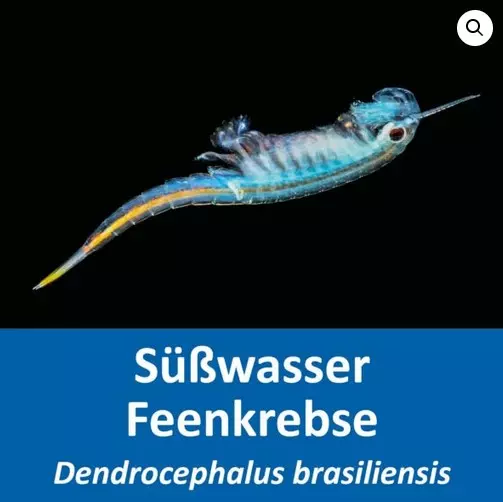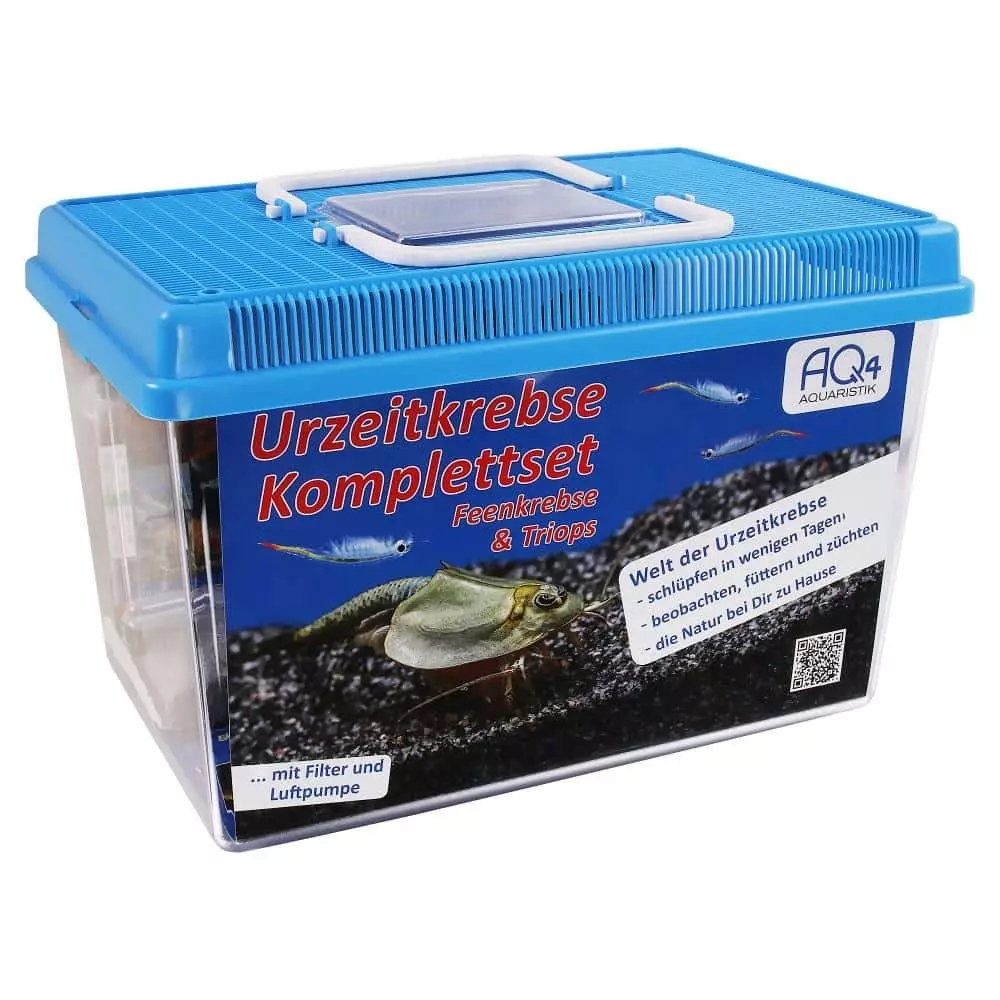
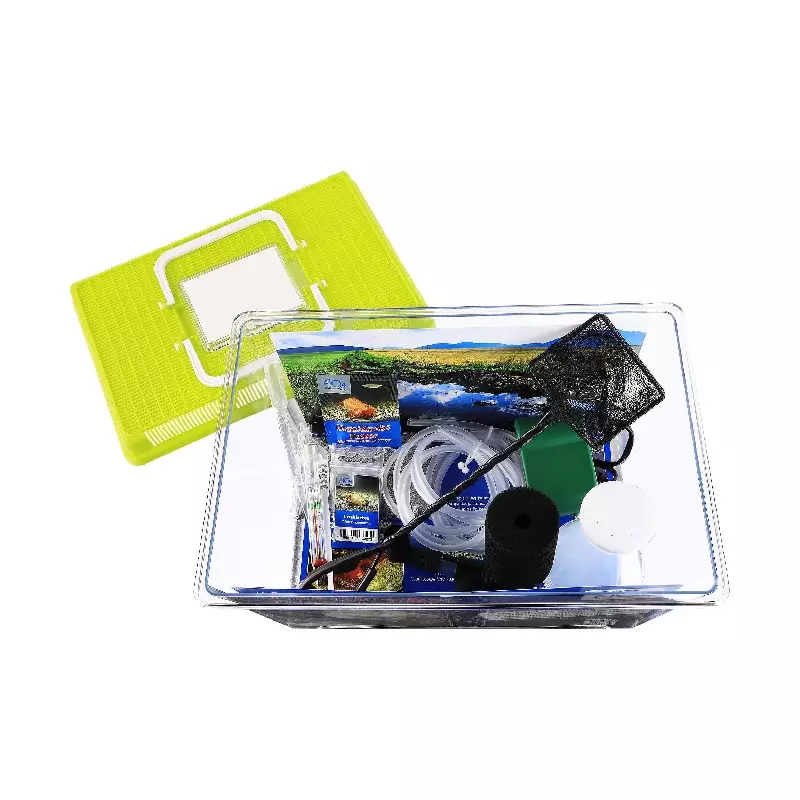
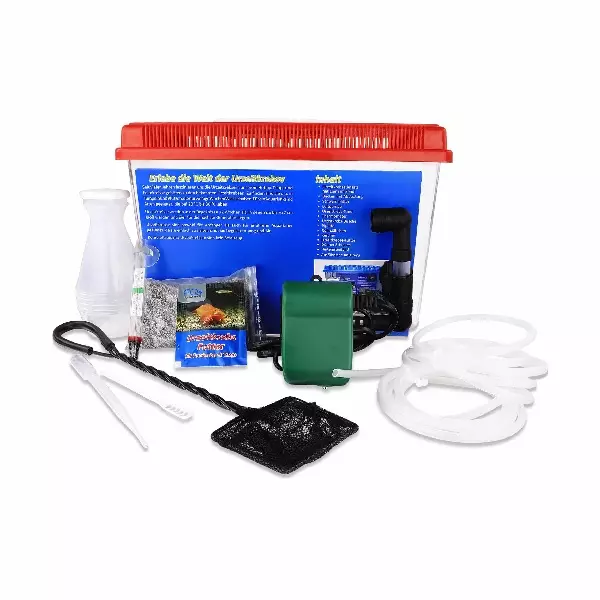
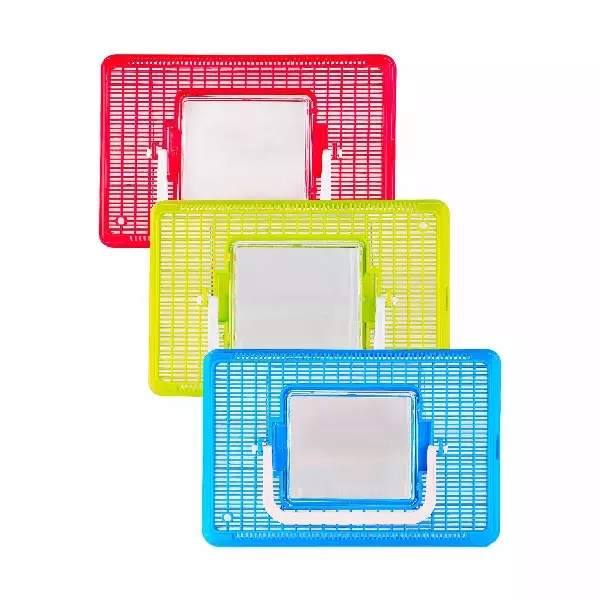
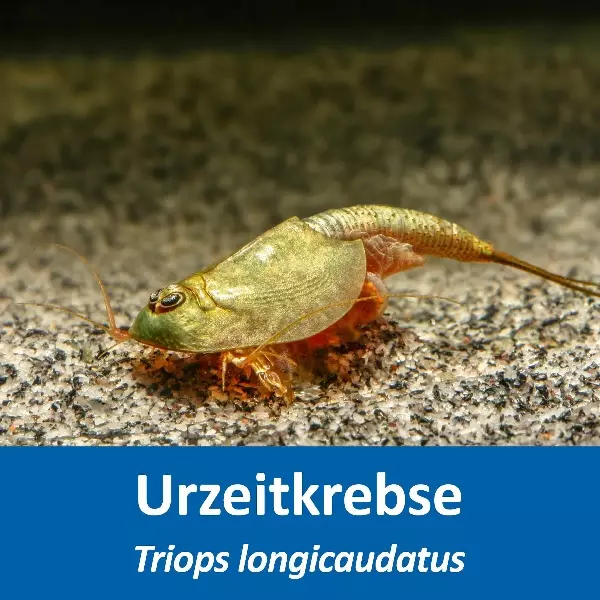
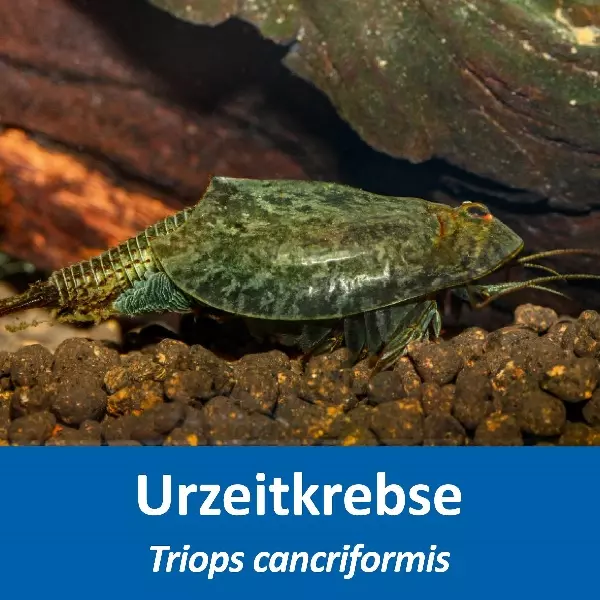
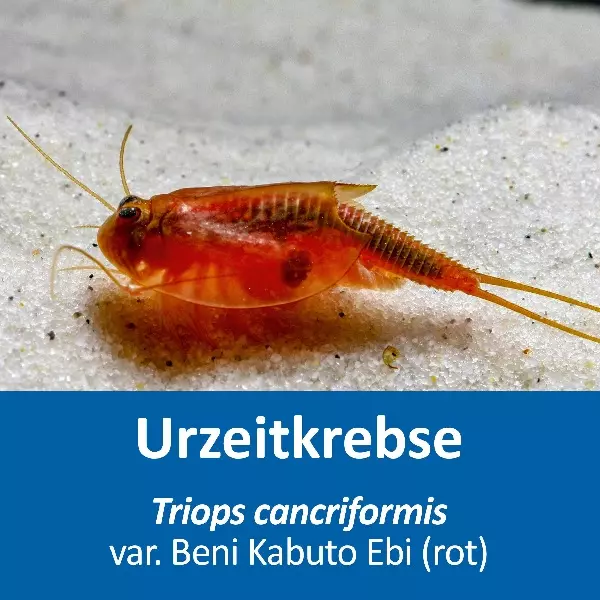
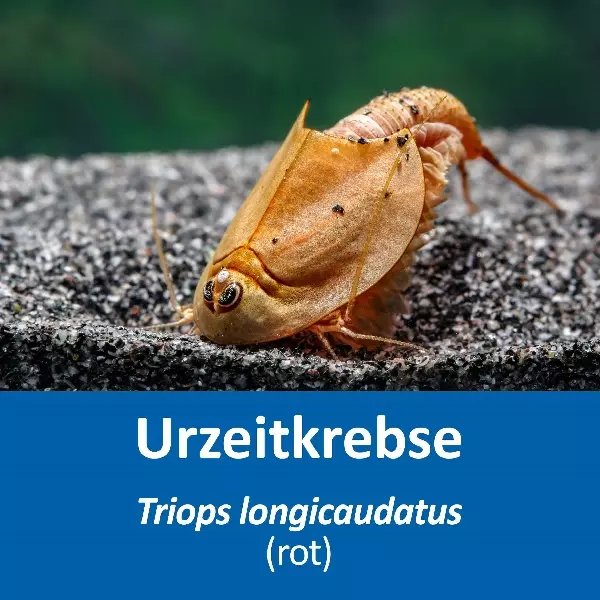
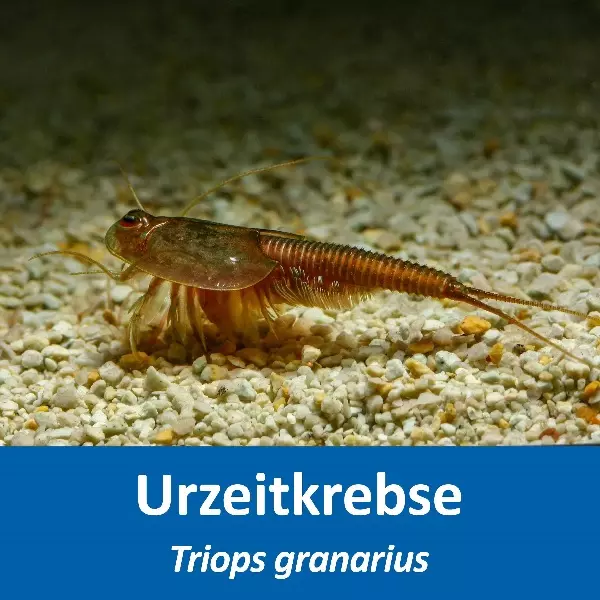
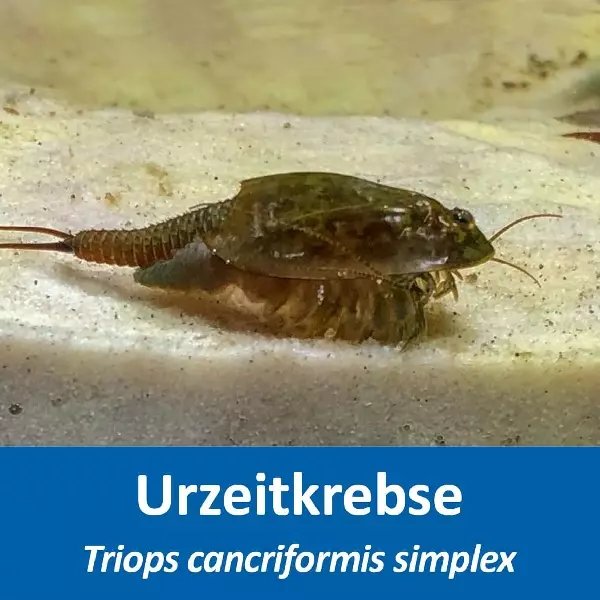
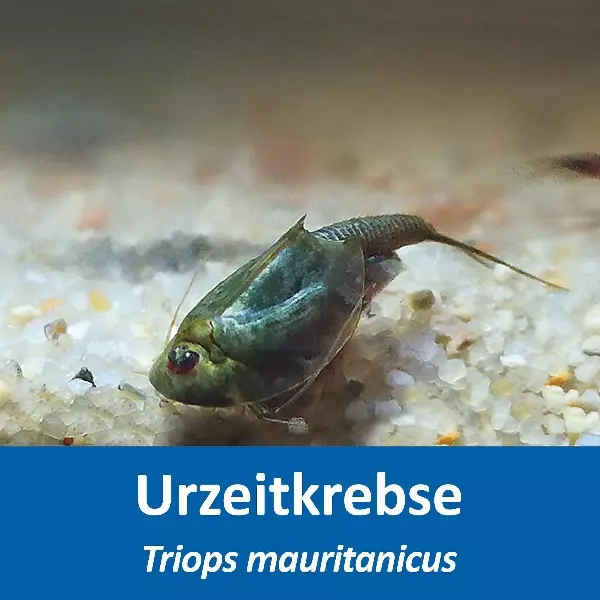
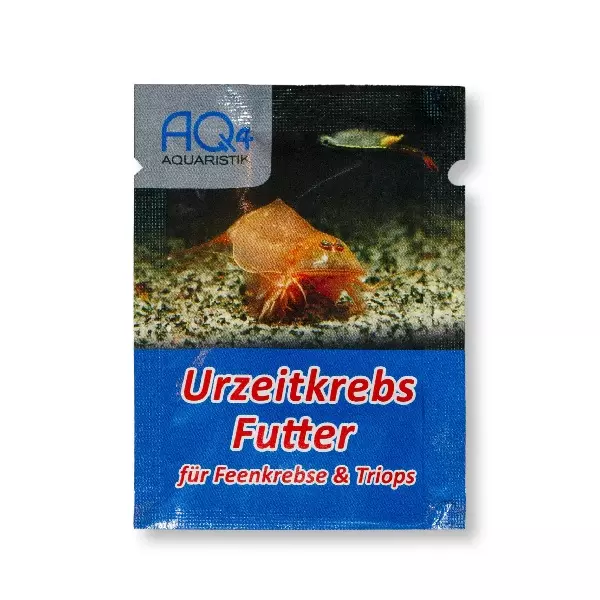




































CHF 64.90
Stock: 0
Available in 1-3 days, acquisition time 14 days

Large primeval crab complete set
- Rearing tank (approx. 30 × 20 × 20 cm, 6 litres) with coloured lid (subject to availability)
- 2 x Triops eggs in sand
- Detailed instructions included, or read here
- Food for primeval crayfish
- Triops sand
- Thermometer
- Pipette and primeval crab shower
- Landing net
- Filter
- Air pump
- Thin hose
Tip: Stick the primeval crab eggs on an adhesive strip and let it float on the water with the eggs facing downwards. This way the eggs are constantly supplied with water and their hatching rate increases.
This large complete set is an extensive gift for birthdays, Christmas or in between! For children from kindergarten and adult explorers!
Note: Lid colour subject to availability. If you have a special request, please note it in the comments when ordering, we will do our best to meet your request.
- Mix (Triops & Fairy Crab) usually contains Triops longicaudatus and Brazilian Fairy Crab (Dendrocephalus brasiliensis), but other species may be included subject to availability.
- Brazilian Fairy Crab (Dendrocephalus brasiliensis) is most comfortable in warmer waters up to 28 °C.
- Triops cancriformis are dark brown-black in colour.
- Triops longicaudatus is an American crayfish, which initially has a light olive-green marbling. With age, the marbling disappears and the colours become more intense.
The colours, materials, types and manufacturers of the contents may differ from the photo.
3 of 3 reviews
4.33 out of 5 stars
Login
10 April 2025 13:03
Das Wachsen geht etwas länger
Mega einfach zu züchten
8 August 2024 21:22
Vorsicht: Lebenslängliche Suchtgefahr :) :) :)
Ich kann das Set als Anzuchtsset nur wärmstens empfehlen; vor allem das grosse Set inkl. Filter und Pumpe. Meiner Erfahrung nach, sollte kein Anzuchtset weniger Zubehör enthalten. Super Schlupfrate - das Wesen der Triops macht dann das Übrige ;). Bei uns wurden die Feen schlussendlich alle von den Triops gefuttert, dafür hatten diese die benötigten Proteine und zwei der Triops - die besten zwei Jägerinnen - sind nun am erwachsen werden, verbuddeln munter Eier wie verrückt, und bereiten uns täglich unglaublich viel Freude... Je nach räumlicher Möglichkeit sollte bei den Longis, welche Wärme mögen, meiner Erfahrung nach zudem auf einen Heizstab gesetzt werden. Sobald die Tiere grösser werden, sollte zudem ein grösseres Becken zum Umsetzen, auch mit deutlich mehr geschliffenem Sand und mehr Platz zur Verfügung stehen, damit sich die Tiere austoben können. Nur mit dem Set alleine ist es somit noch nicht gemacht, wenn man den Tieren ein gutes Leben bieten möchte. Leider sieht man ansonsten im allgemeinen Handel auch verschiedene "Experimentiersets". Ich bin zugegebener Massen eher zufällig und mit gemischten Gefühlen, ebenfalls über so einen Experimentekasten in die ganze Geschichte reingerutscht, habe aber rasch gemerkt, dass jene Experimentiersets alles Mögliche und vor allem hübsch anzusehen sind - aber nicht tierfreundlich, auch wenn es als "einfach und als völlig ausreichend verkauft wird". Urzeitkrebse sind Haustiere und sollen entsprechend behandelt werden, dies erfordert Wissen, Platz, Zeit und Geld, wie bei anderen Haustieren auch. Die Bereitschaft dazu sollte gegeben sein, ehe man sich ein Anzuchtset anschafft. Und Achtung, es besteht definitiv Suchtgefahr ;).
29 January 2023 21:05
Alles top!
Super Ansatz! Es schwimmen 20 Triops in meinem Aquarium!!
Customers also bought
Similar products
Customers also viewed






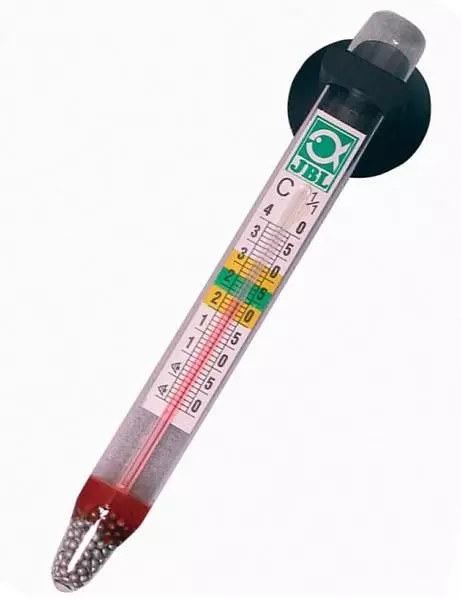
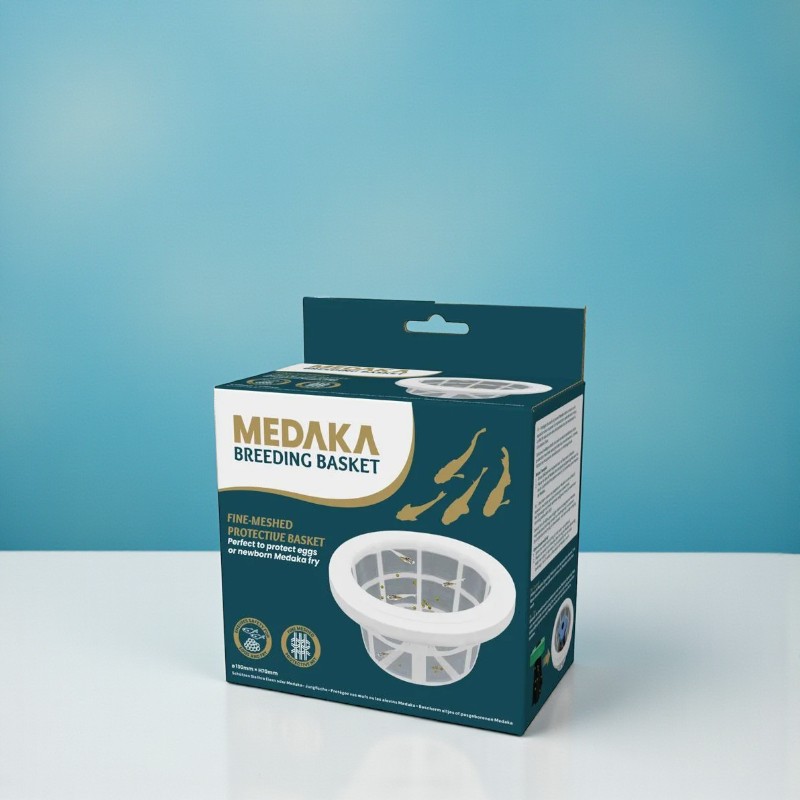
.jpg)
.jpg)


